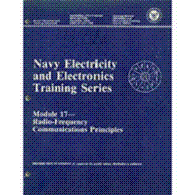Direct Coupling of a Transistor Amplifier
The method of coupling that uses the least number of circuit elements and that is, perhaps, the easiest to understand is direct coupling.
In direct coupling the output of one stage is connected directly to the input of the following stage. The illustration below shows two direct-coupled transistor amplifiers.
Notice that the output (collector) of Q1 is connected directly to the input (base) of Q2. The network of R4, R5, and R6 is a voltage divider used to provide the bias and operating voltages for Q1 and Q2. The entire circuit provides two stages of amplification.

Direct coupled transistor amplifier.
Direct coupling provides a good frequency response since no frequency-sensitive components (inductors and capacitors) are used.
The frequency response of a circuit using direct coupling is affected only by the amplifying device itself. Direct coupling has several disadvantages, however.
The major problem is the power supply requirements for direct-coupled amplifiers. Each succeeding stage requires a higher voltage. The load and voltage divider resistors use a large amount of power and the biasing can become very complicated. Inaddition, it is difficult to match the impedance from stage to stage with direct coupling.
The direct-coupled amplifier is not very efficient and the losses increase as the number of stages increase. Because of the disadvantages, direct coupling is not used very often.
(back)
(top)
(next)
(return to amplification page)


















